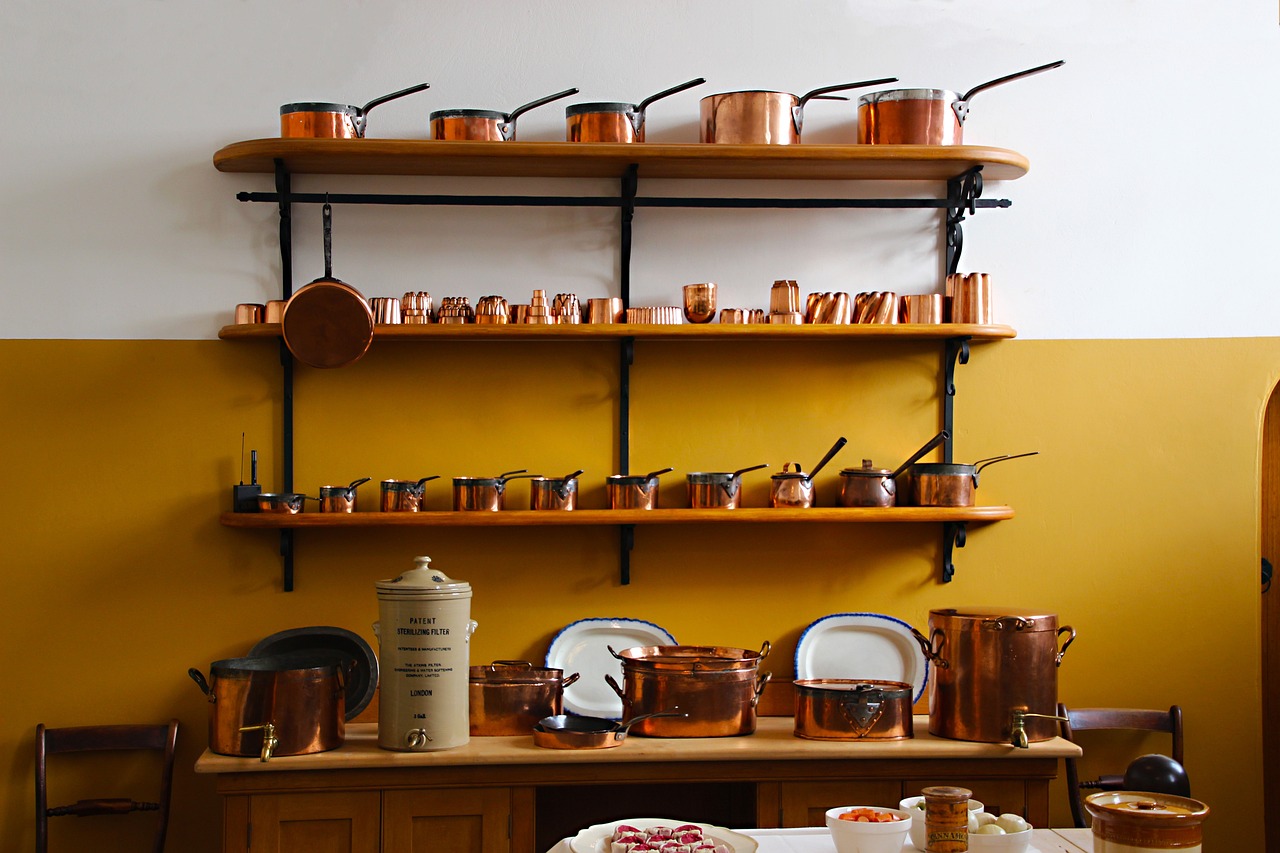Looking to improve your cooking skills? Look no further! In this article, you’ll find a compilation of cooking tips from famous chefs that are sure to take your culinary creations to the next level.
From preserving starch and flavor in certain dishes by avoiding washing rice before cooking, to using mayo instead of butter for a creamier grilled cheese, these tips cover a wide range of techniques and ideas.
Whether you’re a beginner in the kitchen or a seasoned chef, these tips are bound to elevate your cooking game and impress your family and friends. Get ready to unlock the secrets of famous chefs and become a culinary master!
Cooking Tips from Famous Chefs
Use a paper towel to create a perfect meat crust
One valuable tip from famous chefs is to use a paper towel to pat dry your meat before seasoning it. By removing excess moisture, you allow the meat to develop a beautiful crust when it hits the heat. The paper towel absorbs any moisture on the surface, ensuring that the meat cooks evenly and forms a delicious outer layer. Whether you’re grilling a steak or searing a roast, this simple technique can make a big difference in the final result. So next time you’re preparing meat, don’t forget to grab a paper towel and give it a good pat.
Swap butter for mayonnaise in grilled cheese
When it comes to making the perfect grilled cheese sandwich, famous chefs have a secret ingredient: mayonnaise. Instead of spreading butter on the outside of the bread, they recommend using mayonnaise for a creamier texture and a golden, crispy crust. The mayonnaise contains both oil and eggs, which help to ensure a more even browning and prevent the bread from drying out. Simply spread a thin layer of mayonnaise on the bread slices before assembling your sandwich and grilling it to perfection. You’ll be amazed at how this simple switch takes your grilled cheese to a whole new level.
Use a metal bowl to melt cheese evenly
If you’re a cheese lover, you know the frustration of unevenly melted cheese on sandwiches or burgers. Famous chefs suggest a clever solution – using a metal bowl on a griddle or stovetop to melt the cheese evenly. By placing a metal bowl over the cheese, you create a mini-oven effect, trapping the heat and allowing the cheese to melt more uniformly. This technique is especially useful when making dishes like cheeseburgers, where you want the cheese to be perfectly melted and spread evenly across the patty. So next time you’re craving a melty, cheesy delight, remember to grab a metal bowl and enjoy that gooey goodness.
Use dry beans for homemade chili
When it comes to making homemade chili, famous chefs recommend using dry beans instead of canned ones. While canned beans are convenient, they can sometimes have a mushy texture and lack the desired bite.
By starting with dry beans, you have more control over the cooking process and can achieve the perfect texture for your chili. Soaking the beans overnight in water helps them cook more evenly and absorb the flavors of the other ingredients.
Whether you’re making a traditional beef chili or a vegetarian version, using dry beans will elevate your dish and give it a homemade touch.
Remove the membrane from the ribs
If you’re a fan of barbecue ribs, you know that removing the membrane is an essential step in achieving tender and flavorful meat.
Famous chefs stress the importance of removing the shiny membrane from the back of the rib rack before seasoning and cooking. The membrane can be tough and chewy, preventing the flavors from fully penetrating the meat and hindering the overall tenderness.
To remove the membrane, simply use a butter knife or your fingers to loosen it at one end, then grip it firmly and peel it off in one piece. This simple step can make a world of difference in the quality of your ribs.
Avoid constantly moving meat while cooking
Another valuable tip from famous chefs is to avoid constantly moving your meat while cooking. Whether you’re grilling, searing, or roasting, it’s important to give your meat time to develop a delicious crust.
Constantly flipping or moving the meat can prevent the surface from caramelizing and forming that desirable golden-brown color. By allowing the meat to sit undisturbed for a few minutes, you give it a chance to develop those flavorful Maillard reactions, resulting in a more delicious and visually appealing dish.
So next time you’re cooking meat, give it some space and let it work its magic.
Add cinnamon, nutmeg, and lemon to chicken noodle soup
When it comes to elevating the flavor of chicken noodle soup, famous chefs have a unique twist. They suggest adding cinnamon, nutmeg, and lemon to the traditional recipe for a fresh and aromatic taste.
These ingredients add depth and complexity to the soup, enhancing the natural flavors of the chicken and vegetables. A touch of cinnamon and nutmeg can provide warmth and a hint of sweetness, while a squeeze of lemon juice adds brightness and freshness.
So next time you’re making a comforting bowl of chicken noodle soup, don’t be afraid to experiment with these delightful additions.
Cut cake layers using a serrated knife
When it comes to cutting cake layers, famous chefs recommend using a serrated knife for the best results. The serrated edge allows you to cut through the cake without crushing or tearing the delicate layers.
To achieve clean and even slices, hold the knife parallel to the counter and gently saw through the cake using a back-and-forth motion. As you cut, rotate the cake along the serrated edge to ensure an even cut all the way through.
This technique is especially useful when making layered cakes or tortes, where precision is key. So next time you’re preparing a cake, grab a serrated knife for a professional touch.
Add coffee for a richer chocolate flavor
If you’re a fan of chocolate desserts, famous chefs have a simple trick to enhance the flavor – adding a splash of coffee. Coffee and chocolate share many flavor compounds, and the addition of coffee can intensify the richness and complexity of chocolate-based recipes.
Whether you’re making a cake, brownies, or a chocolate mousse, adding a small amount of coffee to the batter can take your dessert to the next level. The coffee doesn’t overpower the chocolate; instead, it enhances and deepens the chocolate flavor, resulting in a more decadent treat.
So next time you’re baking something chocolatey, consider adding a touch of coffee for a delightful surprise.
FAQ’s
How do you cook rice on a gas stove?
Cooking rice on a gas stove is a simple process that requires a few key steps to ensure perfectly cooked grains. Here’s a step-by-step guide on how to cook rice on a gas stove:
- Measure the rice: Begin by measuring the desired amount of rice. The standard ratio for cooking rice is 1 cup of rice to 2 cups of water, but you can adjust it according to your preference.
- Rinse the rice (optional): Some rice varieties benefit from rinsing to remove excess starch. However, certain dishes like risotto, paella, or jambalaya require starch to create a creamy consistency, so avoid rinsing if you’re making these dishes.
- Combine rice and water: Add the rinsed rice or unrinsed rice to a saucepan or pot and pour in the appropriate amount of water. The water should cover the rice by about 1 inch.
- Bring to a boil: Place the saucepan or pot on the gas stove over medium-high heat and bring the water to a boil.
- Reduce heat and cover: Once the water has reached a rolling boil, reduce the heat to low and cover the pot with a tight-fitting lid. This allows the rice to simmer gently and absorb the water.
- Cook for the appropriate time: The cooking time will vary depending on the type of rice you’re using. White rice generally takes about 15-20 minutes, while brown rice may take around 40-45 minutes. Consult the package instructions or use a timer to ensure proper cooking.
- Let it rest: Once the rice is cooked, remove the pot from the heat and let it rest, covered, for about 5-10 minutes. This resting time allows the rice to steam and evenly distribute moisture throughout the grains.
- Fluff with a fork: After the resting period, use a fork to fluff the rice. Gently separate the grains to prevent clumping and ensure a light and fluffy texture.
With these steps, you can easily cook rice on a gas stove and enjoy perfectly cooked grains every time.
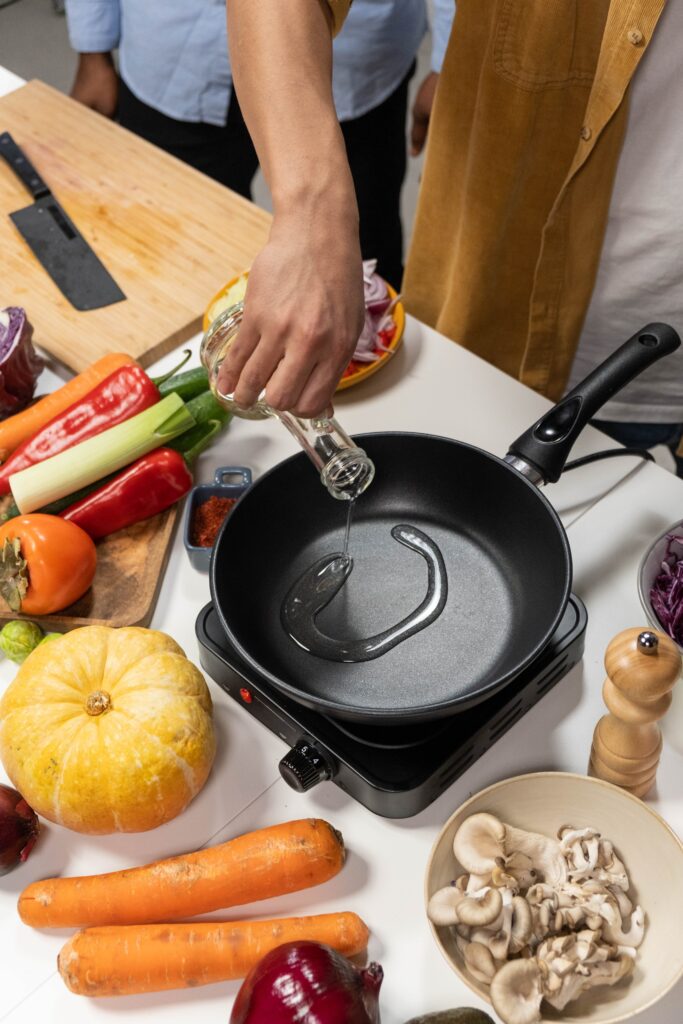
This image is the property of images.pexels.com.
Why does my rice always burn on the gas stove?
If your rice consistently burns on a gas stove, it’s essential to identify and address the underlying causes. Here are a few possible reasons why your rice might be burning:
- Heat control: Gas stoves provide instant heat, and it’s crucial to manage the flame properly. If the heat is too high, the rice can burn before it cooks through. Try reducing the heat to a lower setting and monitor the cooking process closely.
- Cookware: The type and quality of the cookware can affect how evenly the heat is distributed. Thin or low-quality pots may not distribute heat evenly, leading to hot spots and uneven cooking. Consider using a heavy-bottomed pot to ensure consistent heat distribution.
- Incorrect ratio of rice to water: The ratio of rice to water is critical for achieving perfectly cooked grains. Using too little water can cause the rice to stick to the pot and burn while using too much water can result in soggy rice. Follow the recommended ratios or adjust according to your preference.
- Cooking time: Cooking rice requires precise timing. If you leave the rice on the stove for too long, it can overcook and burn at the bottom. Set a timer to ensure that you remove the rice from the heat at the appropriate time.
- Pot size: Using a pot that is too small for the amount of rice being cooked can lead to uneven heat distribution and burning. Make sure to use a pot that allows the rice to cook evenly without overcrowding.
By addressing these potential issues, you can prevent your rice from burning and achieve perfectly cooked and delicious grains on your gas stove.
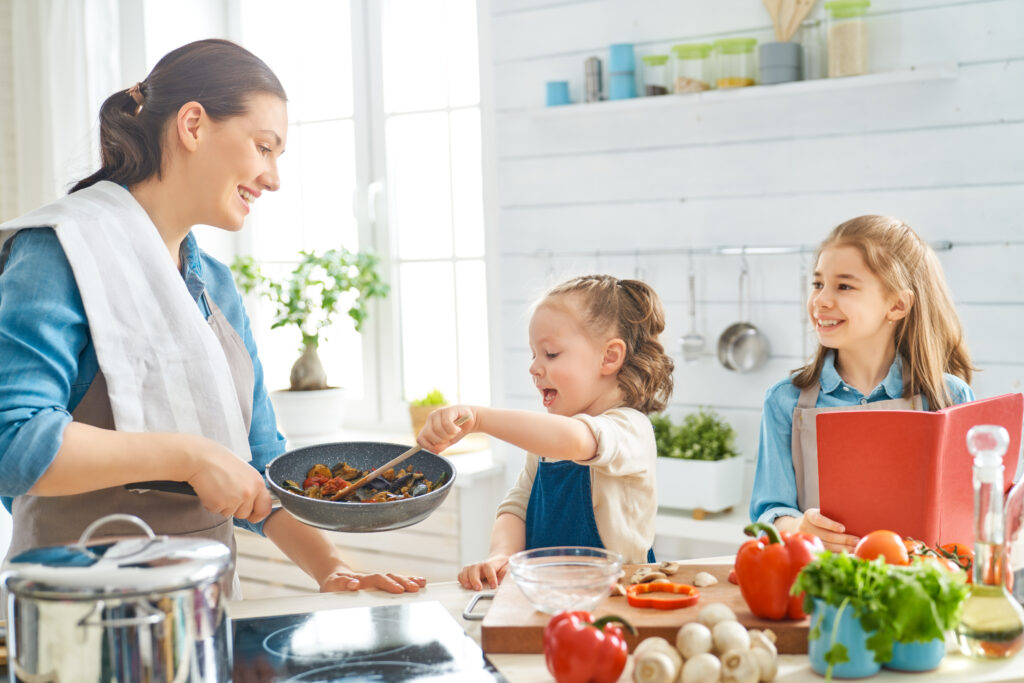
Do you cook rice on the stove with the lid on or off?
When cooking rice on the stove, it’s generally recommended to cook it with the lid on. Here’s why:
- Proper moisture absorption: The lid creates a closed environment that allows the rice to steam as it cooks. This trapped steam is essential for the rice to absorb the water and cook evenly. Without a lid, the moisture would evaporate too quickly, resulting in undercooked or crunchy rice.
- Consistent heat distribution: The lid helps to maintain a consistent temperature throughout the cooking process. It traps the heat and prevents it from escaping, ensuring that the rice cooks evenly. Without a lid, the heat may dissipate too quickly, leading to unevenly cooked rice.
- Fluffy texture: Cooking rice with the lid on helps to achieve a light and fluffy texture. As the rice steams, the moisture evenly distributes, resulting in tender and well-cooked grains. The lid also prevents excess moisture from escaping, which can lead to mushy or sticky rice.
However, there are some exceptions to this rule. For certain dishes like risotto, paella, or jambalaya, you may need to cook the rice without a lid to achieve a specific texture or consistency. These dishes rely on the starch in the rice to create a creamy and cohesive dish, and cooking without a lid helps preserve the starch and moisture.
In most cases, though, it’s advisable to cook rice on the stove with the lid on to ensure proper cooking, moisture absorption, and a fluffy final result.
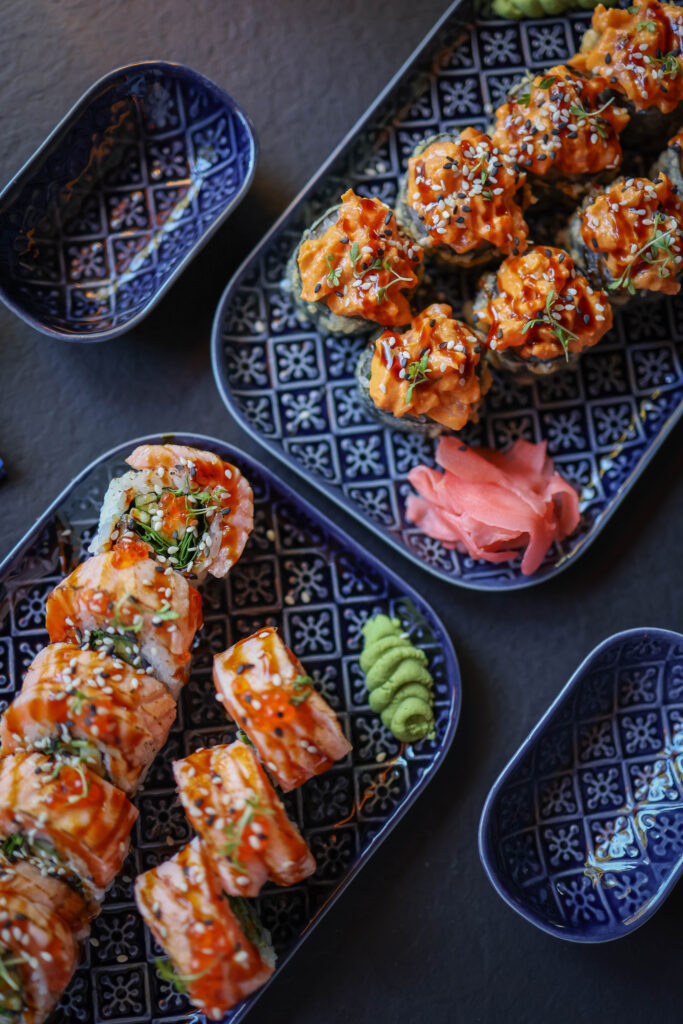
This image is the property of images.pexels.com.
How long does it take to cook rice on gas?
The cooking time for rice on a gas stove will depend on various factors, such as the type of rice and the desired texture. Here are some general guidelines:
- White rice: Generally, white rice takes about 15-20 minutes to cook on a gas stove. This includes the time to bring the water to a boil and the subsequent simmering time. Keep in mind that different varieties of white rice may have slightly different cooking times. It’s best to consult the package instructions or use a timer to ensure doneness.
- Brown rice: Brown rice requires a longer cooking time compared to white rice due to its higher fiber content and tougher outer hull. On a gas stove, brown rice typically takes around 40-45 minutes to cook. Again, refer to the package instructions or use a timer to achieve the desired texture.
- Other rice varieties: Specialty rice varieties, such as wild rice or basmati rice, may have different cooking times. It’s essential to follow the specific instructions provided on the package or recipe to achieve the best results.
Remember that these are general guidelines, and the cooking time can vary depending on factors like the intensity of the heat, the cookware used, and personal preference for the rice’s texture. It’s always a good idea to start with the recommended cooking time and adjust accordingly based on your own experience and preference.
What should I do for dinner tonight?
When it comes to deciding what to cook for dinner, the options are endless. But if you’re looking for some inspiration, here are a few ideas to help you decide:
- Try a new recipe: Challenge yourself by trying a new recipe that catches your eye. Browse through cookbooks, online recipe websites, or cooking apps to discover new flavors and cuisines. You might find a dish that becomes a new family favorite.
- Use ingredients on hand: Take a look at what ingredients you already have in your pantry, refrigerator, or freezer. You can create a delicious meal by using these ingredients as a starting point. Get creative and experiment with flavors and techniques.
- Plan a themed dinner: Pick a theme for your dinner, like Italian, Mexican, or Asian, and create a menu around it. Enjoy a culinary journey by incorporating dishes and ingredients from that specific cuisine. You can even set the table and create a themed ambiance to enhance the dining experience.
- Simplify with a one-pot meal: Make your dinner preparation easier by opting for a one-pot meal. These meals typically involve combining all the ingredients in a single pot or pan, reducing the cleanup effort. Think hearty stews, pasta dishes, or stir-fries.
- Get grilling: If weather permits and you enjoy outdoor cooking, fire up the grill for a flavorful and fuss-free dinner. Grill some marinated meat, vegetables, or even pizza for a fun and delicious meal.
- Think comfort food: Sometimes, all you need is a comforting and familiar meal. Prepare your favorite comfort food, like homemade mac and cheese, roasted chicken, or a cozy soup. These dishes can bring warmth and satisfaction to your dinner table.
Ultimately, what you cook for dinner tonight depends on your personal taste, dietary preferences, and the ingredients you have available. Get creative, have fun, and enjoy the process of creating a delicious meal.
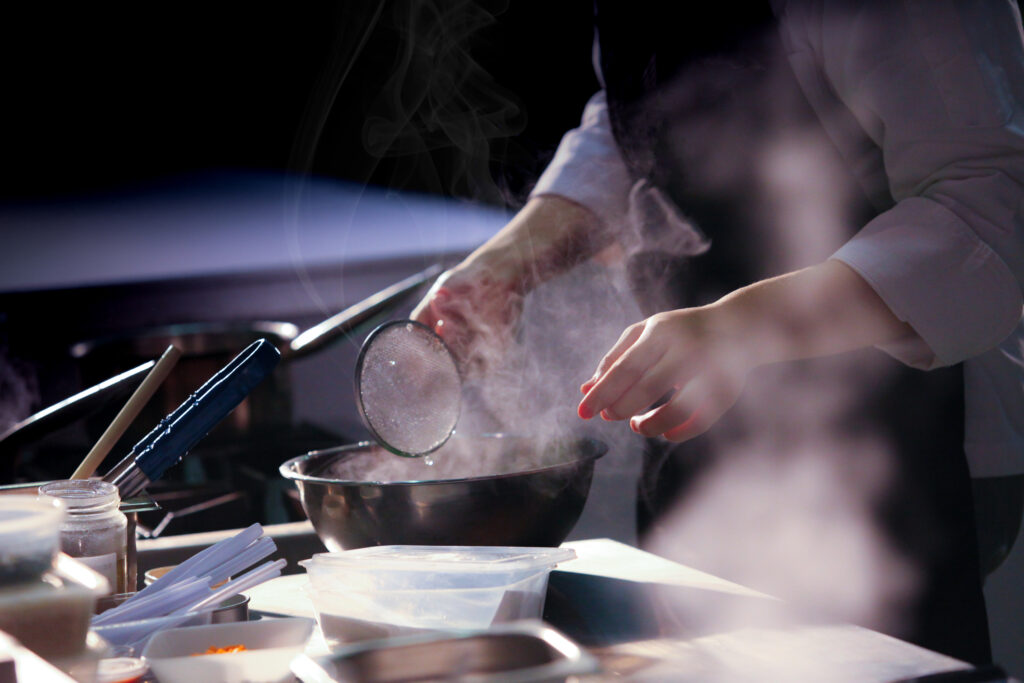
This image is the property of images.pexels.com.
Where can I find the best cooking recipes?
Finding the best cooking recipes can be an exciting and enriching journey. Here are a few places where you can explore and discover a wide variety of recipes:
- Cookbooks: Visit your local bookstore or library, and you’ll find a plethora of cookbooks covering different cuisines, cooking techniques, and dietary preferences. Flip through the pages and discover recipes from renowned chefs, culinary experts, and home cooks.
- Online recipe websites: The internet is a treasure trove of culinary resources. Websites like Allrecipes, Food Network, and Epicurious offer a vast collection of recipes that cater to various tastes and skill levels. You can search for specific dishes, browse different categories, and read reviews from other home cooks.
- Cooking blogs: Many passionate home cooks and food enthusiasts share their recipes through personal blogs. These blogs often provide detailed instructions, personal anecdotes, and beautiful food photography. Explore blogs that align with your culinary interests and bookmark your favorite recipes for future reference.
- Social media platforms: Social media platforms like Instagram and Pinterest have become popular places to find and share recipes. Follow food bloggers, chefs, and cooking influencers to get daily inspiration and discover new dishes. You can save posts or create collections to reference later.
- Online cooking communities: Join online cooking communities or forums where members share their favorite recipes, tips, and techniques. Platforms like Reddit’s r/Cooking or Facebook groups dedicated to cooking can be valuable sources of inspiration and knowledge.
- Cooking magazines: Subscribe to cooking magazines or browse their websites for a wide range of recipes, articles, and cooking tips. Magazines like Bon Appétit, Cooking Light, and Taste of Home offer a diverse array of recipes to suit different tastes and dietary needs.
Remember, the best cooking recipes may vary depending on your personal preferences and cooking style. Explore different sources, experiment with new recipes, and have fun in the kitchen. The more you cook and try different recipes, the better you’ll become at finding the ones that suit your taste the best.
What to cook for dinner when you’re tired of cooking?
Cooking dinner can be a rewarding experience. However, there may be times when you feel tired or uninspired in the kitchen. If you’re looking for easy and convenient meal ideas, here are a few suggestions:
- Takeout or delivery: Give yourself a break from cooking and order takeout or delivery from your favorite restaurant. Enjoy a delicious meal without the hassle of cooking and cleaning up afterward. Try different cuisines or indulge in your go-to comfort food.
- Meal kit delivery: Consider subscribing to a meal kit delivery service that provides pre-portioned ingredients and step-by-step recipe instructions. These services take the guesswork out of meal planning and provide a convenient solution for those tired of cooking. Simply follow the instructions, cook the provided ingredients, and enjoy a home-cooked meal.
- Ready-made or frozen meals: Keep a stash of ready-made or frozen meals in your freezer for days when you don’t feel like cooking from scratch. These meals can be heated up quickly and provide a satisfying dinner with minimal effort.
- Quick and simple recipes: Look for quick and simple recipes that require minimal preparation and cooking time. Opt for dishes like stir-fries, pasta with a simple sauce, or salads that can be put together effortlessly. Use pre-cut vegetables, canned beans, or pre-cooked proteins to speed up the process.
- Leftovers reinvented: Make use of any leftovers you have in your refrigerator by reinventing them into new dishes. Use leftover roasted chicken for tacos or salads, turn yesterday’s pasta into a frittata, or transform roasted vegetables into a grain bowl. Get creative and find ways to repurpose your leftovers into exciting meals.
- Kitchen hacks: Explore kitchen hacks and shortcuts that can save time and effort. For example, use pre-cut vegetables, canned sauces, or pre-cooked grains to streamline the cooking process. Look for tips and tricks that can make cooking easier and more enjoyable.
Remember, it’s okay to take a break from cooking and give yourself permission to enjoy convenience options. A break can be rejuvenating and help reignite your passion for cooking when you’re ready to get back in the kitchen.
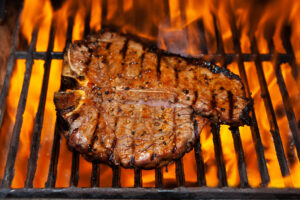
What to cook for people who don’t like to cook?
When cooking for people who don’t like to cook, it’s essential to consider their preferences and make dishes that are simple, flavorful, and easy to put together. Here are a few ideas:
- Build-your-own meals: Set up a build-your-own meal station with options like tacos, bowls, or sandwiches. Provide a variety of proteins, veggies, condiments, and toppings, allowing each person to customize their meal to their liking. This adds an interactive element to the dining experience and makes it enjoyable for those who prefer minimal cooking.
- One-pot wonders: Prepare dishes that require minimal effort and cleanup. One-pot meals like chili, pasta with sauce, or soups can be comforting and satisfying without the need for elaborate cooking techniques. These dishes allow everyone to enjoy a delicious meal without the stress of multiple pots and pans.
- Grilled options: Fire up the grill and prepare a variety of proteins, vegetables, and even desserts. Grilling allows for a flavorful and fuss-free cooking experience. Provide a selection of marinades, rubs, and sauces for everyone to choose from, ensuring everyone finds something they enjoy.
- Salad bar: Create a vibrant salad bar with a variety of fresh greens, toppings, dressings, and add-ons like grilled chicken or shrimp. Allow each person to assemble their own salad according to their preferences. This option is not only convenient but also caters to various dietary needs and tastes.
- Sheet pan meals: Sheet pan meals involve arranging all the ingredients on a single baking sheet and roasting them together. This technique requires minimal preparation and results in flavorful and hands-free cooking. For example, toss vegetables, chicken or fish, and seasonings on a sheet pan and let the oven do the work.
- International flavors: Prepare dishes with bold and diverse flavors from different cuisines. Explore recipes that showcase the flavors of Mexican, Italian, Thai, or Indian cuisines. These dishes often incorporate a variety of spices and ingredients, resulting in vibrant and exciting flavors.
By considering these ideas, you can create meals that appeal to people who don’t like to cook while still providing tasty and satisfying options.
What are the classic cooking techniques?
Classic cooking techniques form the foundation of culinary arts and encompass a range of methods that create exceptional flavors and textures. Here are some of the classic cooking techniques:
- Sautéing: Sautéing involves cooking food quickly in a small amount of oil or fat over high heat. This technique is commonly used for preparing vegetables, meats, or seafood. It allows for fast cooking and imparts a nice caramelization and intense flavor to the ingredients.
- Braising: Braising is a slow cooking method that combines dry heat (searing) and moist heat (slow simmering) to tenderize tougher cuts of meat and infuse them with flavor. The meat is typically seared, and then cooked in a covered pot with liquid at a low temperature for an extended period.
- Grilling: Grilling involves cooking food directly over an open flame or a heated grill grate. It imparts a delicious smoky flavor and adds beautiful char marks to meats, vegetables, or seafood. Grilling is a popular technique for outdoor cooking and imparts unique flavors and textures.
- Roasting: Roasting involves cooking food in an oven at high temperatures. This dry-heat technique is suitable for meats, poultry, vegetables, and even fruits. Roasting enhances flavors and results in delicious caramelization, crisp exteriors, and tender interiors.
- Boiling: Boiling is one of the simplest cooking techniques that involves submerging food in a boiling liquid, usually water. It is commonly used for cooking pasta, blanching vegetables, or preparing stocks and broths. Boiling allows for fast and efficient cooking and can help with tenderizing certain ingredients.
- Steaming: Steaming involves cooking food using the heat of steam, either in a steamer basket or a covered pot. This gentle cooking method helps to retain the natural flavors, nutrients, and colors of the ingredients. Steaming is often used for vegetables, fish, and delicate foods.
- Stir-frying: Stir-frying is a quick-cooking technique that involves cooking small pieces of food in a pan or wok over high heat with constant stirring. The high heat and rapid cooking preserve the texture, color, and flavor of the ingredients and create a delicious stir-fried dish.
- Baking: Baking refers to cooking food in an oven using dry heat. It is commonly used for cakes, cookies, bread, and pastries. Baking relies on proper temperature control and precise measurements to achieve the desired texture, rise, and browning.
These classic cooking techniques form the backbone of countless recipes and provide the necessary skills to create delicious and well-executed dishes. By mastering these techniques, you can explore various cuisines and develop your own culinary style.
Happy Cooking!

lin

